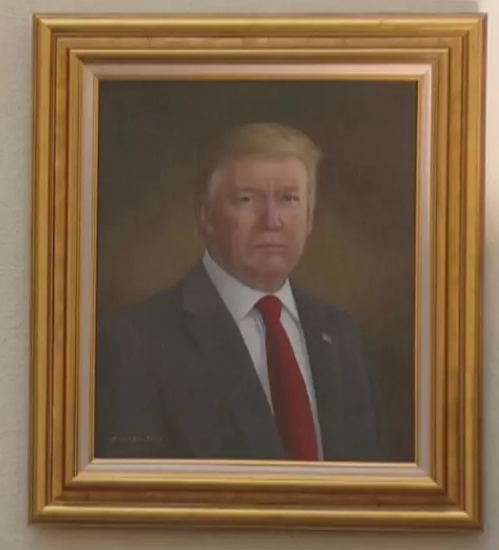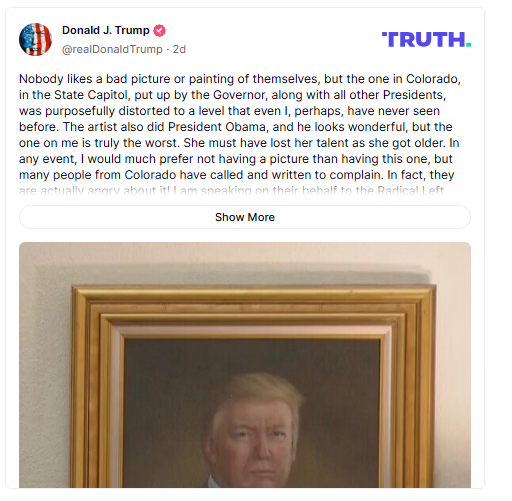Former President Donald Trump has never been one to hold back his opinions, and his recent reaction to a portrait of himself displayed in the Colorado State Capitol underscores his relentless commitment to his personal image.
In a scathing social media post on Truth Social, Trump labeled the painting as “purposefully distorted” and “truly the worst” he has ever seen.
The Controversial Portrait
The portrait, painted by artist Sarah Boardman, was commissioned in 2018 by Colorado Republicans.
Funded by a successful crowdfunding campaign that raised over $10,000, the painting was unveiled in 2019 and hung in the Capitol alongside portraits of other U.S. presidents.
Notably, Boardman also painted a portrait of former President Barack Obama, which received widespread praise.

However, Trump’s reaction to his own portrait was markedly different, as he contended that the artist failed to capture his true likeness.
Trump’s Reaction and Its Fallout
Taking to Truth Social, Trump didn’t mince words, suggesting that Boardman “must have lost her talent as she got older.”
He called for the portrait’s immediate removal, arguing that the distorted image did not do justice to his appearance.
The public response was swift, and shortly after the remarks, state officials removed the painting from the Colorado Capitol.
This move has sparked discussions across political and artistic circles, highlighting the enduring importance of visual representation in American politics.
The Impact of Image in Politics
This incident illustrates how crucial image and representation have become in modern politics.
With the rise of digital media, every detail of a public figure’s appearance is scrutinized, and politicians like Trump remain hyper-aware of their public image.

The controversy over this portrait not only reflects personal vanity but also underscores a broader cultural debate about the role of art in capturing and conveying political narratives.
A Broader Reflection on Presidential Portraits
Historically, presidential portraits have been a significant aspect of political legacy. Leaders like Theodore Roosevelt and Winston Churchill have also faced criticism for their depictions, a reminder that the portrayal of power is often as contested as political policy.
In this instance, the debate extends beyond mere aesthetics to a question of historical narrative and identity.
This version maintains a polished, reader-focused narrative that integrates key details naturally, ensuring the content remains both informative and engaging without any overt references to internal monetization strategies.